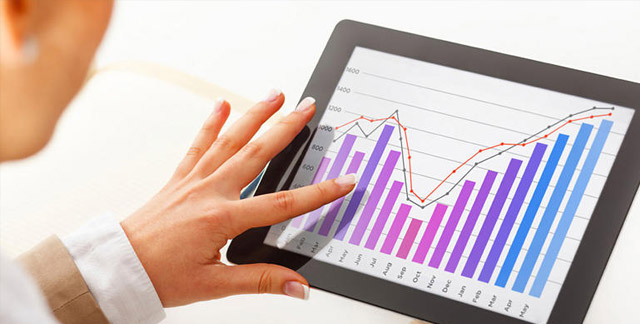Related Links
Delivering Tech-driven Healthcare in the Real World
Emerging technologies are transforming everything from patients’ expectations to the way care is delivered, measured and improved. Here are some of the biggest drivers.
Patients are active participants.
The social web has shaped patients’ expectations for 24/7 access – to view health records, email doctors, and refill prescriptions. They can even rate and review doctors online, search for pricing, and conduct research on their health conditions.
As a result, patients are participating more in their own care, and demanding more value from providers. Digital technologies — from electronic health records (EHRs) to telemedicine — make information and care more easily accessible, which leads to more satisfied patients.
Regulations and privacy concerns are driving technology.
Governments around the globe believe technology can a create better health system. To encourage adoption of new technologies, countries are passing mandates and incentive packages. For example, the U.S. HITECH Act supports technology including EHRs, pushing for “Meaningful Use” — data-enabling electronic exchange of health information to improve quality, safety and efficiency of care. Providers who implemented EHRs and demonstrated Meaningful Use received money back from the government.
With more private data going digital, many countries are passing regulations — such as the EU’s General Data Protection Regulation (GDPR) — to establish rules around the handling and use of personal information. Patients are extremely concerned about privacy and security. Digital systems can ensure privacy compliance.
Care is becoming outcomes-based and data-driven.
Along with patient participation, and more EHR adoption, comes a desire for open, reusable data. There is a shift toward outcomes-based, rather than fee-for-service, healthcare. In outcomes-based care, providers are paid based on good patient outcomes, not on numbers of procedures done or patients seen
To achieve good outcomes, health systems use data to reduce variation in how they treat diseases and conditions—a process that requires all clinicians to provide accurate diagnose. Big data analytics can help move healthcare eventually to forecasting, predictive modeling and decision optimization. These are keys for improving outcomes across entire patient populations.
Why Paper Persists
Healthcare has been turned upside down with the advent of the digital world. Yet you live and work in the physical world. Here are four key reasons why paper is still a big part of the real world of healthcare.

Practicality and simplicity.
Because of its inherent convenience, paper is still the go-to method for processes like gathering patient information before an initial visit, or getting a signature. Patients and providers both have a high comfort level with paper—it’s always on and boasts amazing battery life. You can’t deny paper’s easy portability.

Personal patient experience.
Many providers say technology in the exam room detracts from the personal, face-to-face attention they like to give their patients. They don’t want time per patient to go down while time keying into a computer goes up. Providers often see technology as an administrative burden instead of an enhancement to patient care.

Cost of technology.
These are especially cost-prohibitive for smaller, independent clinics and practitioners in rural areas who have unreliable access to high-speed broadband or IT support. When you factor in lost productivity while getting an EHR up and running, sometimes it’s not cost-effective, despite incentives.

Interoperability issues.
With so many EHR systems on the market, different hospital networks use different systems. Information exchange is not always seamless. Sharing is critical for patient care, as well as for research and innovation. But “Meaningful Use” didn’t necessarily produce useful information. Therefore, some providers still use paper.
How to Bridge the Digital Divide
Healthcare providers are adopting digital technologies – some quickly, some reluctantly. But paper will be around for a while. Here’s how to accelerate your digital transformation while making peace with paper.
Prioritize security and privacy. Whether patient information is in paper or digital form, the basic protections apply. Xerox scanners have no internal hard drives, keeping patient data safe while you convert it from paper to digital.
Create paper-to-digital on-ramps. Design systems and workflows that account for both paper and digital. By planning for both formats, it’s easier to flex and shift between the two, allowing for greater adoption.
Digitally capture patient intake. When patients complete paper forms, data entry is an issue. Instead, immediately scan paper forms using software that automatically routes information into the EHR.
Plan for messy paper. Real documents are odd-sized, rarely perfect, and often double-sided with notes in the margins. Look for technology that can reliably handle any shape or size you throw at it.
Make data accessible. Choose capture software with ease of use and image acuity. Crystal-clear scans unlock content through optical character recognition (OCR), searchable PDFs, and customized workflows.
Digitize historical documents. Backfile conversion will improve access to historical information for your healthcare team and patients alike. Production scanners for high-volume scanning simplify the process.
How We Can Help
Our decades of experience working with some of the biggest names in healthcare make us a reliable partner in your digital transformation. Xerox scanners are interoperable with major EHR systems including Cerner, Epic, McKesson and many others, and used by thousands of healthcare providers.
Case Study
Improving pharmacy customer experience in Retail Chains
With new scanner technology, TWAIN software and McKesson RX integration, a major supermarket chain reduced delays in customer service.



